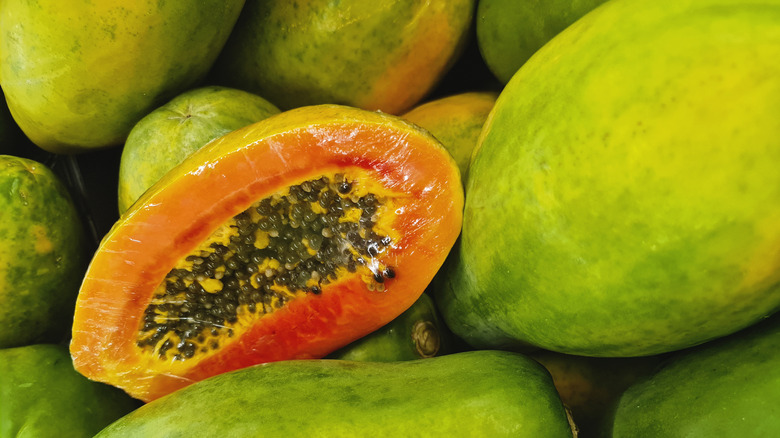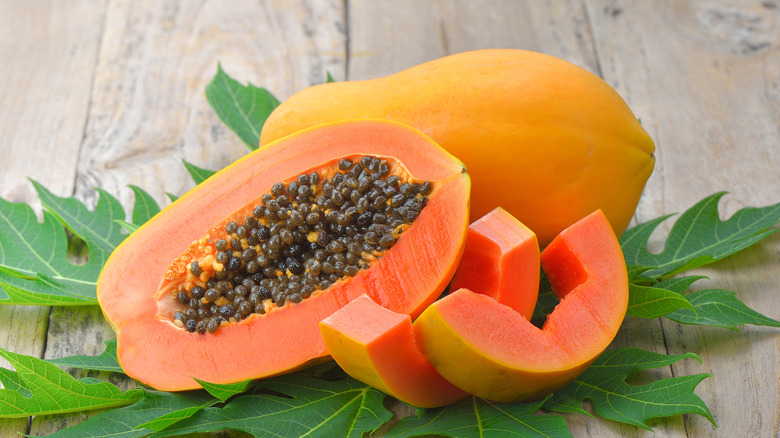How To Choose A Perfect Papaya Every Time
Every fruit has its own unique signs of ripeness. Even more tropical fruits that are less commonly available in the United States, like mangoes, will have certain colors, smells, and softness when fully ripe. Understanding how to identify ripe fruits and how to help fruits like avocados ripen quicker can be key in making the most out of produce, especially produce that is hard to find.
Larger fruits, like papayas, are harder to identify when it comes to ripeness. Fortunately, getting familiar with papayas' signs of ripeness is easy. When picking a papaya, look for one that is yellow on the outside and slightly soft when touched.
The size of papayas necessitates getting fruit that is as ripe as possible. Otherwise, the fruit will just sit on the kitchen counter for a long period of time as it ripens. Even worse, you might pick a papaya that is overly ripe.
Signs of ripeness
With papayas, the most important thing to look for is color. While other factors definitely matter as well, color will highlight most clearly how ripe a papaya is. Papayas start out green and slowly develop in color over time, eventually leading to a warm, yellow exterior.
A papaya at peak ripeness will be mostly but not fully yellow. Waiting until the entire exterior is yellow might actually mean cutting into an overripe papaya. Not only would an overripe papaya be mushy, but it would also lose a lot of its flavor, so it is important to catch the color at just the right time.
The other major sign to look for is softness. When gently touched or pressed, the papaya should give just a little bit and feel slightly soft. A papaya with a lot of softness also runs the risk of being overripe, while a hard papaya is definitely underripe.

